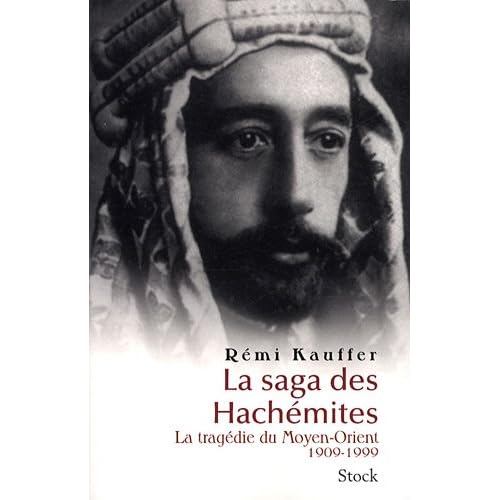Hashemite (Arabic هاشمي) traditionally refers to those belonging to the
Banu Hashim, or "clan of Hashem", a clan within the larger
Quraish tribe. It also refers to an Arab dynasty whose original strength stemmed from the network of tribal alliances and blood loyalties in the
Hejaz region of
Arabia, along the
Red Sea.
http://en.wikipedia.org/wiki/Image:Jordan_coa.png
The Hashemites trace their ancestry from
Hashim ibn Abd al-Manaf (died c.
510 CE), the great-grandfather of
Muhammad. The early history of the Hashemites saw them in a continuous struggle against the
Umayyads for control over who would be the
caliph or successor to Muhammad. The Umayyads were of the same tribe as the Hashemites, but a different clan. This rivalry eventually would lead to the split between the
Sunni and
Shia. After the overthrow of the Umayyads, the
Abbasids would present themselves as representatives of the Hashemites, as they claimed descent from
Abbas ibn Abd al-Muttalib, an uncle of Muhammad.
From the 10th century onwards, the
Sharif (religious leader) of
Mecca and its
Emir was by traditional agreement a Hashemite. Before World War I,
Hussein ibn Ali of the Hashemite Dhawu-'Awn clan ruled the
Hejaz on behalf of the
Ottoman sultan. For some time it had been the practice of the
Sublime Porte to appoint the Emir of Mecca from among a select group of candidates. In 1908, Hussein bin Ali was appointed Emir of Mecca. He found himself increasingly at odds with the
Young Turks in control at
Istanbul, while he strove to secure his family's position as hereditary Emirs. Between
1917 and
1924, after the collapse of Ottoman power, he ruled an independent Hejaz, of which he proclaimed himself king, with the tacit support of the British
Foreign Office. His supporters are sometimes referred to as "Sharifians" or the "Sharifian party". His chief rival in the Arabian peninsula was the king of the highlanders on the highland of
Najd named
Ibn Saud, who annexed the Hejaz in
1925 and set his own son,
Faysal bin Abdelaziz Al Saud, as governor. The region was later incorporated into
Saudi Arabia.
Hussein bin Ali had five sons:
Ali, who briefly succeeded to the throne of Hejaz before its loss to the
Saud family;
Abdullah, who later became the king of
Transjordan, and whose
descendants have ruled that kingdom, now known as the
Hashemite Kingdom of Jordan, ever since;
Faisal, who became
King of Iraq;
Prince Zeid, who became a claimant to the throne of Iraq when his brother's grandson was overthrown in a coup in
1958; and Hassan, who died at a young age.
Source:wikipedea


